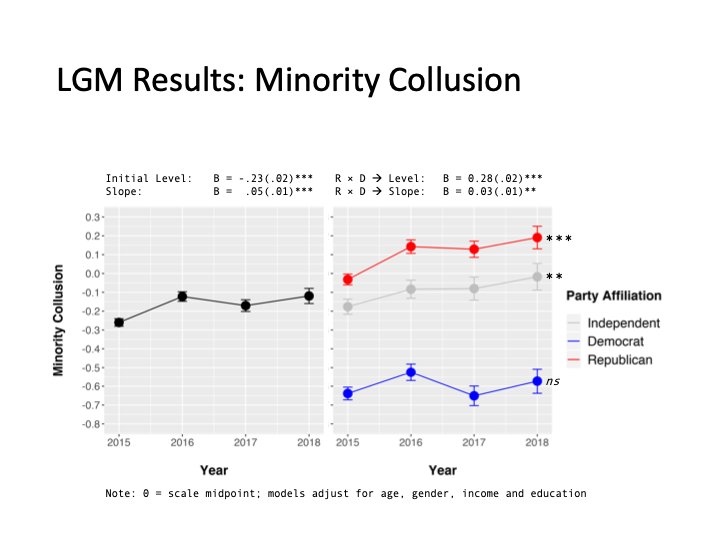
I’m so excited to share this paper by @shahrgoudarzi, V Badaan and me—just out in Perspectives on Psychological Science.
How do humans decide how resources should be allocated in society? The answer has tended to be dominated by Equity Theory (ET).
bit.ly/395zB10
1/
How do humans decide how resources should be allocated in society? The answer has tended to be dominated by Equity Theory (ET).
bit.ly/395zB10
1/
ET asserts that people make distributive-fairness judgments using the equity rule, according to which benefits and burdens are apportioned depending on people’s merits (talent, ability, and hard work).
Our work challenges ET’s hold over the study of distributive fairness.
2/
Our work challenges ET’s hold over the study of distributive fairness.
2/
Echoing pioneers in the study of fairness, such as Melvin Lerner and Morton Deutsch, we reinvigorate the notion that everyday fairness goes far beyond equity.
Other rules, such as equality/need—according to which people should have the needs equally met—often predominate.
3/
Other rules, such as equality/need—according to which people should have the needs equally met—often predominate.
3/
Drawing from diverse literatures, we argue that humans’ distributive fairness beliefs are heterogeneous across cultures, ages, and relationships.
In other words, which fairness rule we emphasize depends on where we’re from, how old we are, and who we’re interacting with.
4/
In other words, which fairness rule we emphasize depends on where we’re from, how old we are, and who we’re interacting with.
4/
We thus urge that the scholarly focus on universal constraints make room for processes of _ideological construction_, in which institutions shape beliefs about distributive fairness.
In particular, we argue that economic systems guide our emphasis—or lack thereof—on equity.
5/
In particular, we argue that economic systems guide our emphasis—or lack thereof—on equity.
5/
Illustrating the social construction of equity beliefs, we examine how neoliberal economic structures—government policies that promote deregulation, privatization, and free markets—have shaped distributive-fairness beliefs in over 160 countries since the 1990s.
6/
6/
Our measure of equity beliefs comes from the World Values Survey (@ValuesStudies), and taps the degree to which respondents want incomes made more equal vs. more unequal to motivate individual effort. Those who prefer unequal incomes were deemed higher in equity beliefs.
7/
7/
Our measure of country-level neoliberalism comes from the @FraserInstitute’s Economic Freedom Index, which taps the degree to which governments have enacted neoliberal policies related to (e.g.) transfers and subsidies, taxation, collective bargaining, and market regulation.
8/
8/
Using Dynamic Structural Equation Modeling (DSEM), we model change in equity beliefs across WVS cohorts in 160+ countries as a function of neoliberal structures (and vice versa). This Bayesian approach lets us account for our data's multilevel (wave-within-country) structure.
9/
9/
The findings, in a nutshell:
Equity beliefs at time _t_ vary significantly and positively as a function of neoliberal structures at time _t_-1.
But neoliberal structures at time _t_ do NOT vary significantly with equity beliefs at time _t_-1.
10/
Equity beliefs at time _t_ vary significantly and positively as a function of neoliberal structures at time _t_-1.
But neoliberal structures at time _t_ do NOT vary significantly with equity beliefs at time _t_-1.
10/
These results suggest that macro-level structures—here, neoliberalism—play a big role in producing distributive beliefs rooted in equity. Non-neoliberal structures, in contrast, predict development of, and may help instill, other fairness principles (such as equality/need).
11/
11/
In sum, our work seeks to loosen Equity Theory’s grip on the psychology of distributive fairness, to highlight the heterogeneity of fairness beliefs across cultures, ages, and development, and to emphasize equity’s roots in processes of macro-level ideological construction.
12/
12/
On the empirical front, we examine how neoliberalism—the globally ascendant economic ideology of the last several decades—may have increased people’s reliance on equity (and their acceptance of economic inequality!) in countries where neoliberalism is most pronounced.
13/
13/
Margaret Thatcher, that great muse of neoliberalism, said: “Economics are the method; the object is to change the heart and soul.” Our work bears out Thatcher’s conviction that our moral commitments are heavily contingent on the systems we create for ourselves.
14/
14/
I'll close by saying that this work is truly the brainchild of its first author, the amazing scholar Shahrzad Goudarzi (@shahrgoudarzi), who deftly bridged the gap between highly abstract theory and rigorous empirical analysis. I'm thankful to have been along for the ride!
15/
15/
• • •
Missing some Tweet in this thread? You can try to
force a refresh




